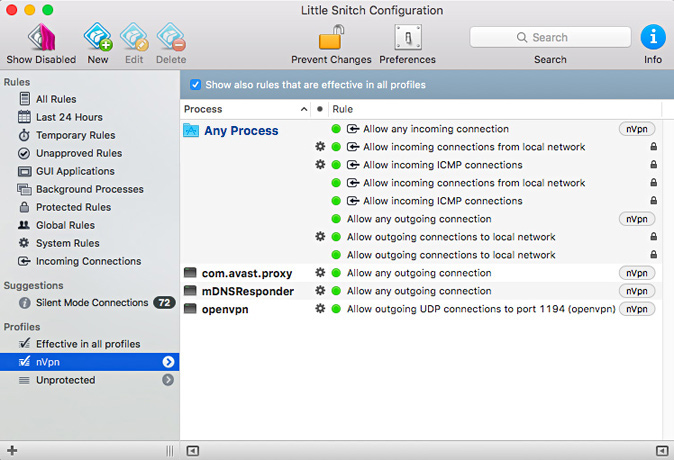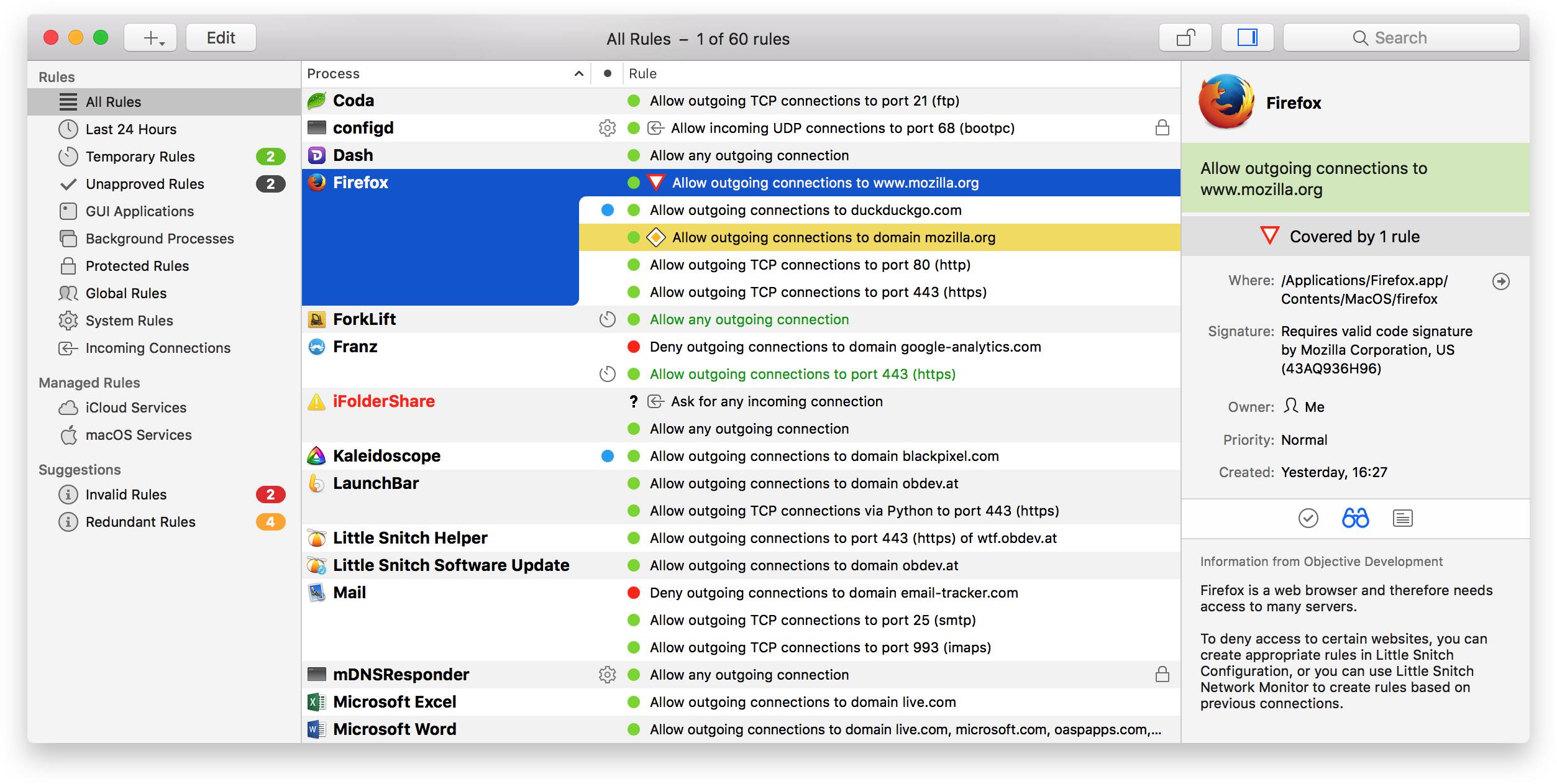

- #HOW TO RESTART LITTLE SNITCH SOFTWARE DAEMON INSTALL#
- #HOW TO RESTART LITTLE SNITCH SOFTWARE DAEMON UPDATE#
- #HOW TO RESTART LITTLE SNITCH SOFTWARE DAEMON MANUAL#
- #HOW TO RESTART LITTLE SNITCH SOFTWARE DAEMON CODE#
For instance if I want to reverse engineer the protocols used. I can also redirect traffic to localhost servers where I can log requests and analyze the captured packets. I do make extensive use of the HOSTS file but not for blocking. I do not use a third party cache, I maintain a custom root and can use it to block wildcarded domains, something that cannot be done with /etc/hosts. Sometimes I run programs with ktrace (strace for Linux folks I guess) and look at the calls.īut truthfully in most cases controlling DNS catches most if not all of today's applications' attempts contact the mothership.
#HOW TO RESTART LITTLE SNITCH SOFTWARE DAEMON CODE#
I have yet to see any source code that attempted to obfuscate opening sockets. If I have the source code and I am curious I just read it. What is the purpose of an "application firewall" in an open source world? My plan is to make it far more modular than OpenSnitch with an client API so the GUI can be completely separate (and also perhaps allowing different clients to have different policies). Also Douane simply will not work properly with containers because of how it assumes that everything is in the host namespace.Īs an aside, I decided to write my own application-level firewall for GNU/Linux (mainly as an exercise to myself to learn Rust as well as learn more about low-level network programming in Linux). The only thing that you might argue is a benefit of using a kernel module is that figuring out the "path" for an application might be easier but I'm not sure I agree. My main complaint about implementing all of these things in kernel space is that it's simply not necessary - with netfilter_queue and connmark you can relay all decision making to userspace without losing any generality.

It also has a bunch of questionable technical decisions in how policies are handled, especially when it comes to "edge cases" like processes with long paths or connections where the socket file descriptor is greater than 8 or something like that. Rather than implementing all of the rules and policy in userspace (as OpenSnitch does) it implements the rules in kernelspace.

#HOW TO RESTART LITTLE SNITCH SOFTWARE DAEMON MANUAL#
Important Note: Older versions of Little Snitch (prior to version 4.6) cannot be installed on macOS Big Sur, not even with this manual approval.I remember looking into Douane a while ago and was not impressed.

#HOW TO RESTART LITTLE SNITCH SOFTWARE DAEMON INSTALL#
#HOW TO RESTART LITTLE SNITCH SOFTWARE DAEMON UPDATE#
However, Apple may remove this possibility at any time with a future update of macOS Big Sur. This requires to start up your computer from macOS Recovery and enter a Terminal command to grant the necessary permission. It uses the newer System Extension API provided by Apple and is therefore fully compatible with macOS Big Sur.Īlternatively, it’s currently still possible to manually approve the loading of particular kernel extensions. The latest version 5 of Little Snitch no longer uses this unsupported Kernel API. The operating system now refuses to load such kernel extensions by default. This kind of kernel extension is no longer supported on macOS Big Sur. Little Snitch 4 needs to install a Network Kernel Extension in order to perform its network traffic filtering.


 0 kommentar(er)
0 kommentar(er)
